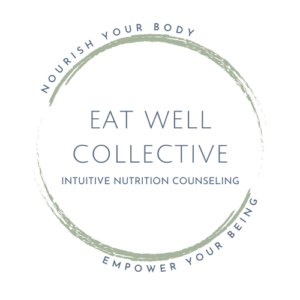September is National Cholesterol Education Month. We often hear about good cholesterol versus bad cholesterol and which foods will raise or lower cholesterol, but what exactly is cholesterol?
What is Cholesterol?
Cholesterol is a fat (lipid) that is found in foods containing animal products or bi-products, like meat or dairy. Fruits and vegetables do not contain cholesterol. In our own bodies, we produce cholesterol in the liver.
The body uses cholesterol to make hormones, bile acids, vitamin D, and other substances.
The body makes all the cholesterol it needs. Cholesterol circulates in the bloodstream but cannot travel by itself. So cholesterol travels in packages called lipoproteins, which have fat (lipid) inside and protein outside.
Two main kinds of lipoproteins carry cholesterol in the blood:
1. Low density lipoprotein, or LDL, which also is called the “bad” cholesterol because it carries cholesterol to tissues, including the arteries. Most of the cholesterol in the blood is the LDL form. The higher the level of LDL cholesterol in the blood, the greater your risk for heart disease.
2. High density lipoprotein, or HDL, which also is called the “good” cholesterol because it takes cholesterol from tissues to the liver, which removes it from the body. A low level of HDL cholesterol increases your risk for heart disease.
What’s the problem?
If there is too much cholesterol in the blood, some of the excess can become trapped in artery walls. Over time, this builds up and is called plaque. The plaque can narrow vessels and make them less flexible, a condition called atherosclerosis or “hardening of the arteries.” This process can happen to blood vessels anywhere in the body, including those of the heart, which are called the coronary arteries.
How many Americans have high cholesterol?
High blood cholesterol affects more than 102 million American Adults (20 years or older) and more than 35 million of those people have levels of 240 mg/dL or higher, which puts them at high risk for heart disease. High cholesterol increases your risk for heart disease and your chance of having a heart attack. The higher your cholesterol level, especially the LDL (bad) cholesterol level, the greater the risk.
Can children and adolescents have high cholesterol?
Yes, high cholesterol can develop in early childhood and adolescence, and risk increases as weight increases. More than 20% of Americans aged 12-19 years have at least one abnormal lipid level. All children over the age of 2 should have their cholesterol checked if:
- Overweight or obese
- Family history of high cholesterol, a family history of heart disease, diabetes, high blood pressure
- Certain chronic conditions (chronic kidney disease, chronic inflammatory diseases, congenital heart disease, and childhood cancer survivorship
How do I know if I have high cholesterol?
All people age 20 and older should have their cholesterol measured at least once every five years with a fasting lipoprotein profile, which measures total cholesterol, LDL (bad) cholesterol, HDL (good) cholesterol and triglycerides.
What does my cholesterol level mean?
Total Cholesterol
Less than 200 mg/dL Desirable
200–239 mg/dL Borderline high
240 mg/dL and above High
LDL Cholesterol
Less than 100 mg/dL Optimal (ideal)
100–129 mg/dL Near optimal/above optimal
130–159 mg/dL Borderline high
160–189 mg/dL High
190 mg/dL and above Very high
HDL Cholesterol
Less than 40 mg/dL Major heart disease risk factor
60 mg/dL and above Gives some protection against heart disease
Triglycerides
Less than 150mg/dL
150–199 mg/dL Mildly high
200–499 mg/dL High
500 mg/dL and above Very high
How do I lower my risk?
The good news is that you can take steps to control your cholesterol. You can lower your cholesterol levels through lifestyle changes:
- Eat a healthy diet with low-fat and high-fiber foods (eat more fresh fruits, fresh vegetables, and whole grains)
- Exercise regularly
- Maintain a healthy weight
- Don’t smoke or quit if you smoke
Want to learn more about cholesterol lowering foods? Click here to view my list of 18 cholesterol lowering super foods!

Additional Resources:
http://www.cdc.gov/cholesterol/
http://www.heart.org/HEARTORG/Conditions/Cholesterol/CholestrolATH_UCM_001089_SubHomePage.jsp



